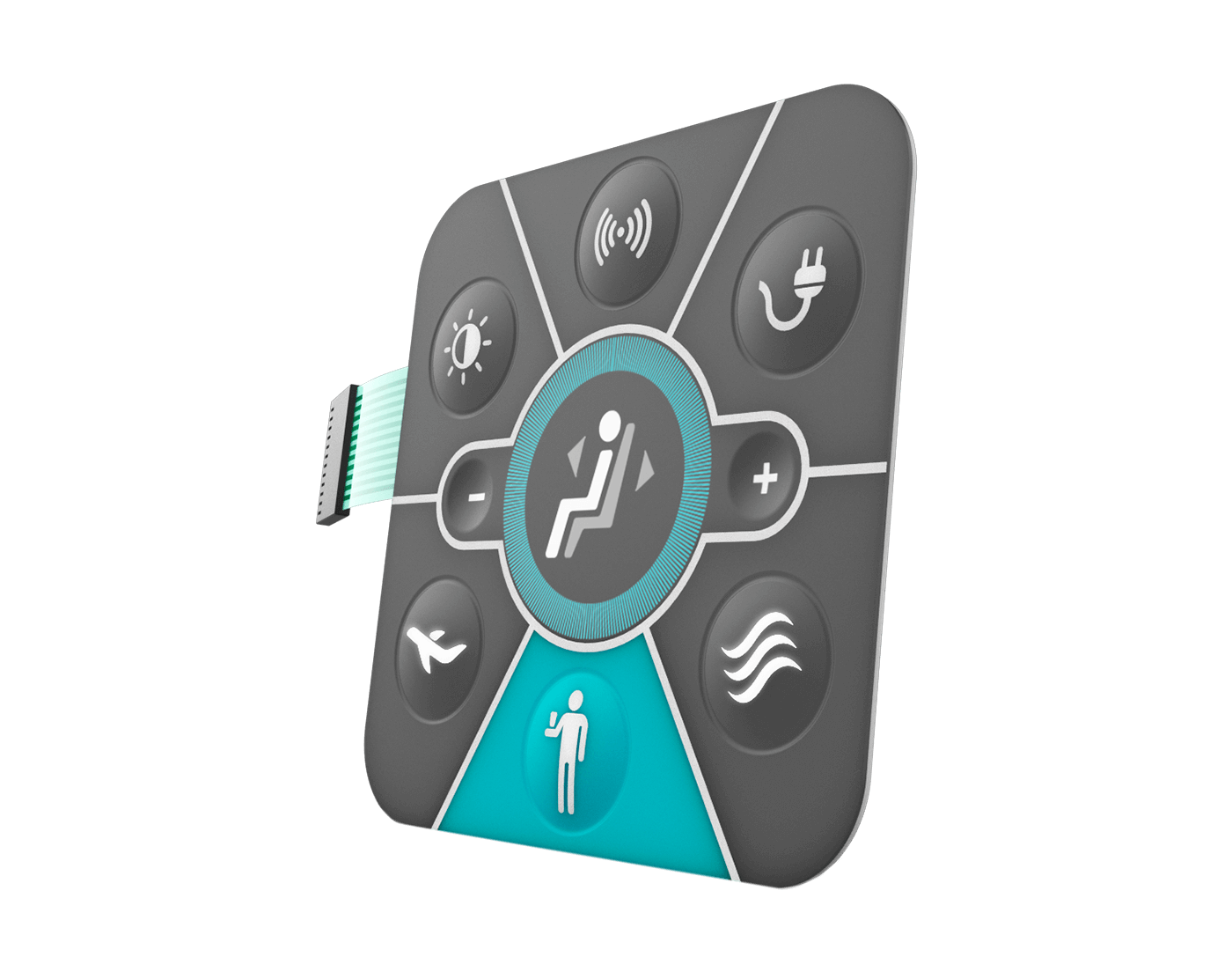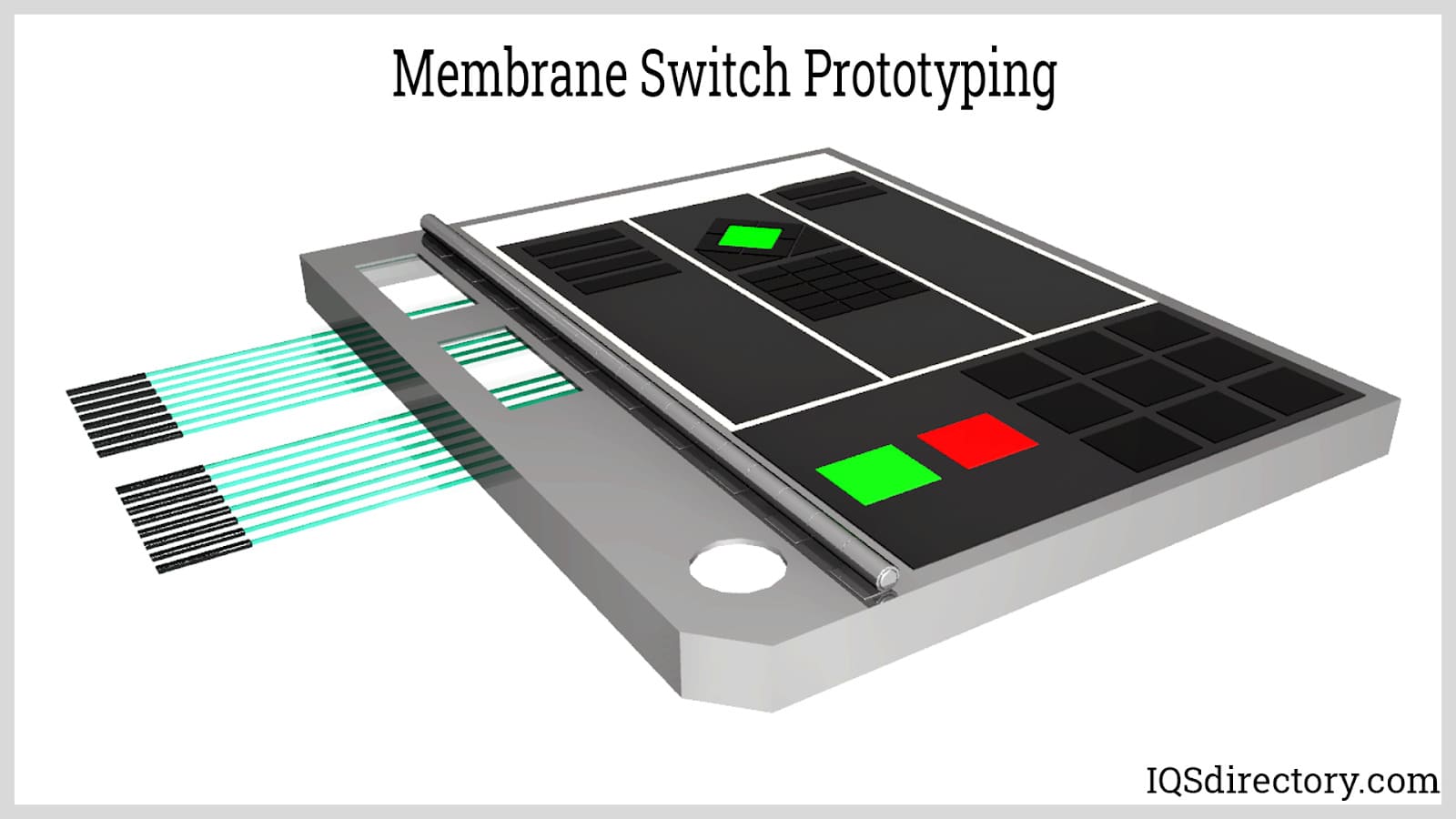Membrane Switches vs. Traditional Switches: What You Need to Know
Membrane Switches vs. Traditional Switches: What You Need to Know
Blog Article
Comprehending the Significance of Membrane Switches in Customer User Interfaces
Membrane buttons are important parts in the design of reliable user interfaces, assisting in not just functionality but likewise improving visual charm and user communication. Their one-of-a-kind functions, such as resistance to customizable layouts and environmental aspects, make them ideal for a varied range of applications across multiple markets. As we check out the numerous advantages and future patterns related to Membrane innovation, it comes to be clear that these switches are more than simply parts; they represent a convergence of innovation and functionality. The ramifications of this innovation on individual experience are worth analyzing even more.
What Are Membrane Buttons?

The spacer layer, which contains glue homes, permits the separation of the circuit layer from the overlay, ensuring that the switch stays in a non-activated state till pressed. When pressure is put on the overlay, it compresses the spacer layer, connecting the space and completing the circuit in the underlying layer. This design not only reduces the physical room required for traditional mechanical buttons but also boosts the toughness of the gadget, as Membrane buttons are typically immune to dirt, wetness, and various other ecological elements.
Generally found in applications ranging from consumer electronic devices to clinical gadgets, Membrane switches are important to modern-day innovation, offering a user-friendly and effective user interface that aligns with contemporary design requirements.
Advantages of Membrane Switches
While numerous button modern technologies exist, Membrane Switches deal distinctive advantages that make them especially preferable in numerous applications. Among the key benefits of Membrane buttons is their portable layout, which enables space-saving implementations in devices where property is limited. Their thin profile not only boosts aesthetic charm however likewise facilitates lightweight building.
One more significant advantage is their resistance to ecological aspects. Membrane buttons are commonly secured against wetness, dust, and contaminants, making them perfect for use in demanding atmospheres, such as medical devices and industrial tools. This toughness prolongs the lifespan of the button, reducing upkeep costs and improving integrity.
Furthermore, Membrane switches can be customized to satisfy particular design needs, including distinct graphics and shades that enhance customer communication. Their responsive comments choices can also be tailored to supply a satisfying customer experience. Furthermore, Membrane buttons are economical, especially in high-volume applications, as they can be produced effectively.
Applications in Different Industries

In the consumer electronic devices field, Membrane buttons prevail in tools such as microwaves, washing equipments, and remotes. Their responsive comments and aesthetic alternatives enhance customer experience while giving a streamlined, modern-day appearance. In addition, automobile producers make use of Membrane switches in control panel controls and infomercial systems, where space is restricted, and customer interaction is crucial.
Furthermore, the i loved this commercial industry leverages Membrane buttons in control panels for equipment and equipment, permitting for user-friendly procedure in often extreme atmospheres. Their resistance to chemicals and moisture makes certain long life and dependability in these applications. Overall, the flexibility of Membrane Switches contributes dramatically to their prevalent usage, making them indispensable in numerous technological domains.
Layout Considerations for Membrane Switches

When making Membrane buttons, a number of vital considerations need to be taken into consideration to make sure ideal capability and customer experience. The option of materials is important; choosing long lasting, high-grade substrates can enhance the button's long life and resistance to ecological variables such as dampness and temperature level changes.
Secondly, the design of the visuals overlay need to prioritize clarity and simplicity of use. Icons and message need to be understandable, and the layout should facilitate user-friendly interaction (membrane switches). Furthermore, responsive comments is vital; incorporating a responsive dome or various other systems can enhance the customer experience by offering physical confirmation of activation
One more important factor is the button's electric efficiency. Designers must make sure address that the conductive traces are properly developed to decrease resistance and stay clear of signal disturbance. This includes evaluating the called for actuation force and guaranteeing compatibility with the digital parts they will user interface with.

Future Fads in Membrane Innovation
As technology remains to advance, Membrane buttons are poised to progress considerably, driven by advancements in materials and producing strategies. One emerging pattern is the unification of advanced products, such as adaptable substratums and conductive inks, which enhance longevity and reduce the general weight of Membrane buttons. These materials not only enhance the responsive response however likewise permit the design of switches that can stand up to harsher ecological problems.
Furthermore, the combination of touch-sensitive modern technologies is changing traditional Membrane Switches into more interactive individual interfaces. Capacitive touch sensing units installed within Membrane button panels can provide a more user-friendly and receptive customer experience, straightening with the expanding demand for sleek, modern designs in consumer electronics.
Furthermore, developments in printing methods, such as electronic and 3D printing, allow fast prototyping and personalization of Membrane switches. This versatility enables producers to respond faster to market demands and consumer preferences.
Lastly, sustainability is becoming a significant emphasis, with suppliers discovering green products this hyperlink and procedures. As these patterns unfold, the future of Membrane modern technology assures improved performance, aesthetic appeal, and ecological duty, solidifying their role in advanced interface throughout different industries.
Conclusion
Finally, Membrane Switches stand for a crucial element in the design of customer interfaces, incorporating performance with aesthetic adaptability. Their advantages, including longevity and resistance to ecological variables, make them appropriate for diverse applications throughout different industries. Thoughtful layout factors to consider enhance individual communication and experience. As innovations in technology proceed, the advancement of Membrane buttons is anticipated to additional improve user interfaces, driving technology and boosting use in a significantly intricate technical landscape.
Membrane buttons are essential elements in the layout of reliable user interfaces, helping with not only functionality but additionally enhancing visual charm and user interaction.Membrane Switches serve as an essential element in various user interfaces, helping with a seamless communication in between customers and digital gadgets.While numerous button modern technologies exist, Membrane Switches deal distinct benefits that make them particularly desirable in various applications.Furthermore, Membrane switches can be personalized to satisfy particular design requirements, incorporating unique graphics and colors that enhance user interaction.In conclusion, Membrane Switches represent an important part in the style of customer interfaces, combining functionality with visual adaptability.
Report this page